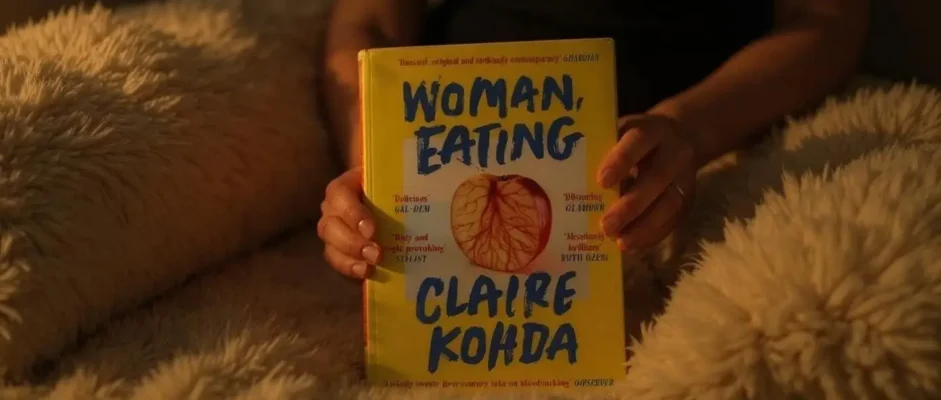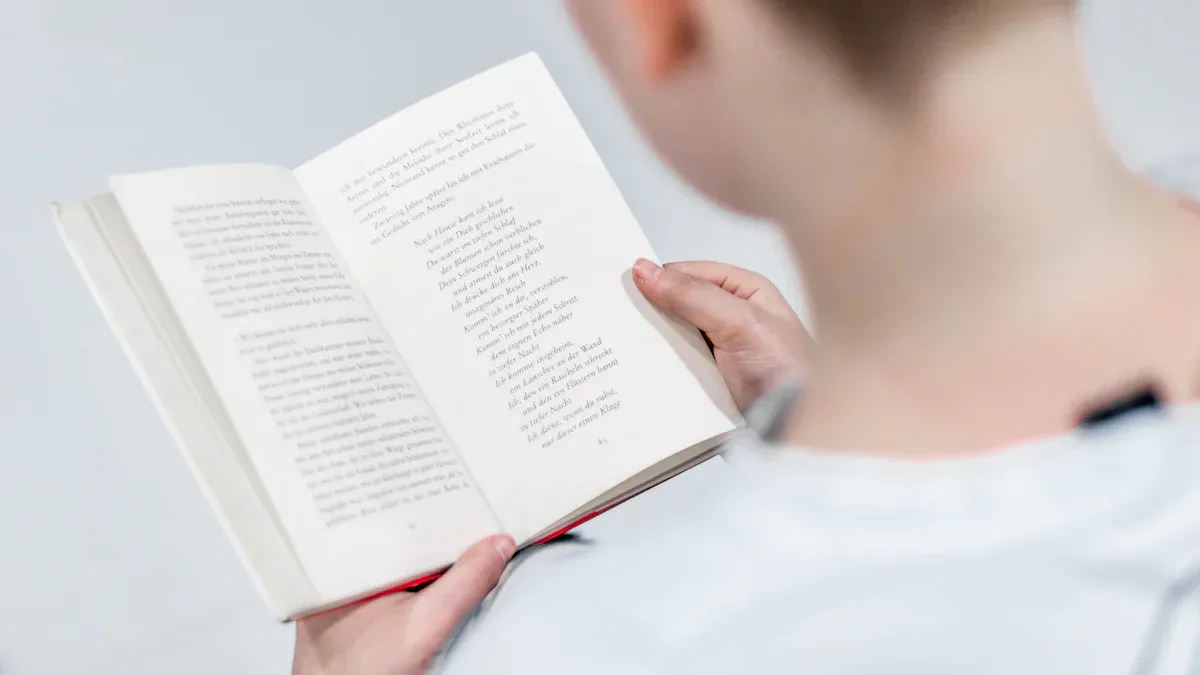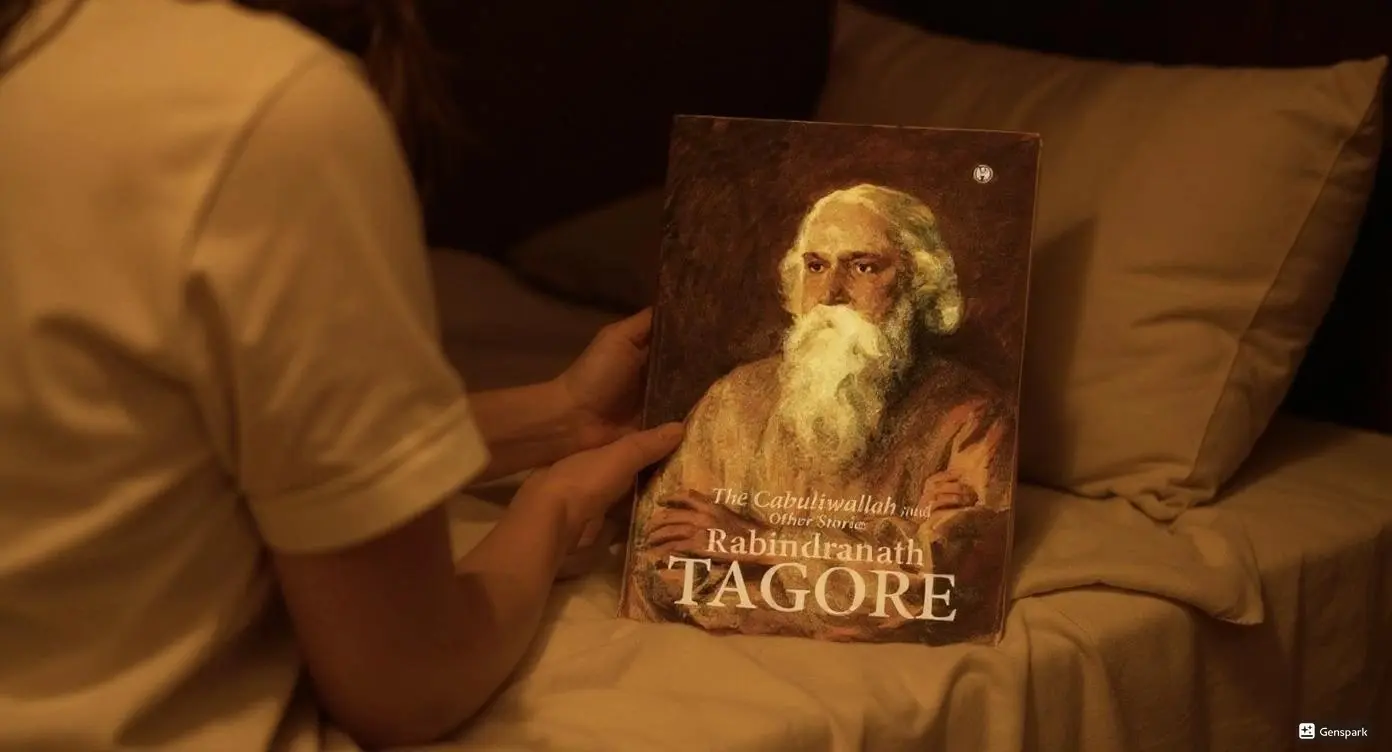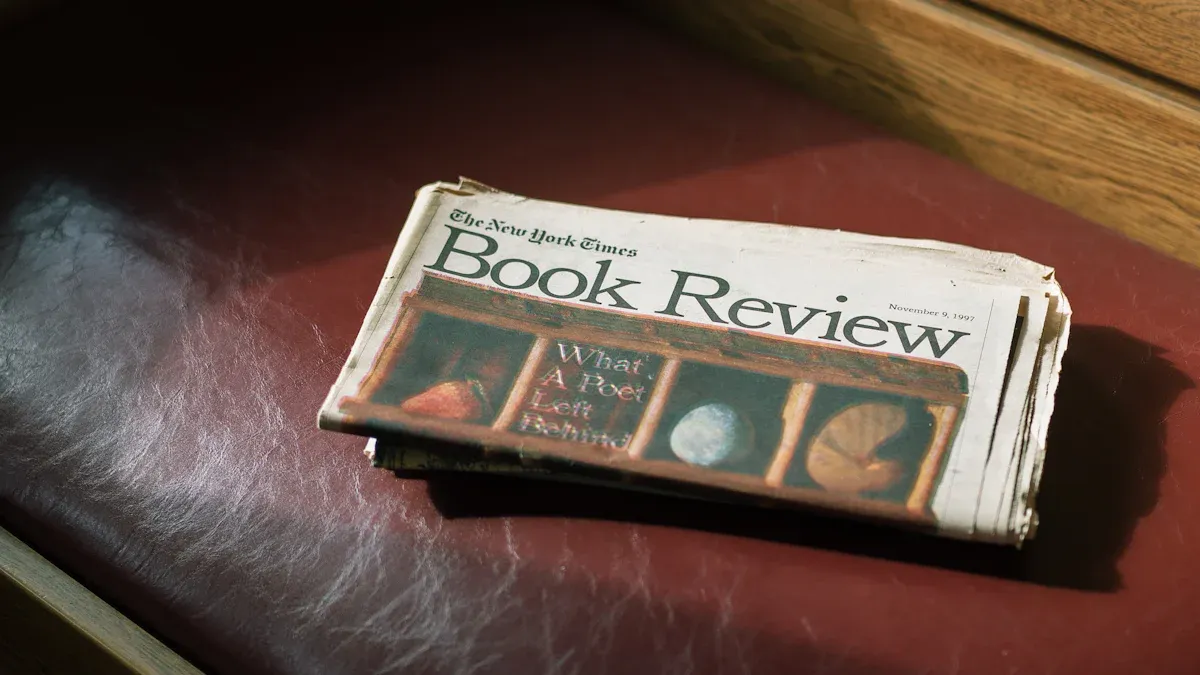I picked up “Woman, Eating” at 2 AM during one of those sleepless nights when nothing seems to satisfy, craving something different from the typical vampire fiction flooding bookstores. Claire Kohda’s debut transforms the vampire narrative into a profound meditation on mixed-heritage identity, featuring 23-year-old Lydia, a half-Japanese, half-English vampire navigating modern London’s art scene while caring for her deteriorating mother. This isn’t your typical bloodsucking romance.
Kohda masterfully illustrates how unacknowledged desire undermines our best intentions, crafting a story that resonates with anyone who’s felt caught between cultures or struggled with their relationship to food and identity. I’ve read hundreds of vampire novels in my 20 years of reviewing, and this one stands apart by addressing themes rarely explored in the genre. The book’s 240 pages pack more emotional weight than most 500-page epics I’ve encountered.
What makes “Woman, Eating” particularly relevant is how it captures millennial alienation through supernatural metaphor. This is a novel about people caught between cultures, caught between self-loathing and self-respect; caught between a domineering mother and her own life. After finishing it, I found myself questioning everything about traditional vampire narratives and their relevance to contemporary identity struggles.
Key Takeaways
Food becomes a powerful symbol for cultural connection and identity, with Lydia’s inability to eat human food representing her disconnection from her Japanese heritage and humanity.
The mother-daughter relationship explores intergenerational trauma, showing how past pain and cultural displacement affect subsequent generations.
Kohda’s sparse prose creates an atmospheric reading experience that mirrors Lydia’s emotional emptiness and psychological isolation.
The book challenges traditional vampire mythology by focusing on psychological rather than physical horror, making it accessible to literary fiction readers who typically avoid genre work.
Basic Book Details
Publishing Information: March 24, 2022 by HarperVia
Genre: Literary Fiction, Horror, Contemporary Fantasy
Plot: Mixed-heritage vampire artist Lydia struggles with identity, hunger, and caring for her aging vampire mother in modern London
Series Information: Standalone novel
Page Count: 240 pages
Main Characters: Lydia – biracial vampire artist torn between human desires and vampiric nature; Mother – centuries-old vampire with dementia
Plot Synopsis And Cultural Context
Mixed-Heritage Vampire Protagonist Navigating Modern London Art Scene
In her windowless studio, where she paints and studies the work of other artists, binge-watches Buffy the Vampire Slayer and videos of people eating food on YouTube and Instagram, Lydia considers her place in the world. The story unfolds through Lydia’s daily routine of art-making, caring for her mother, and struggling with her vampiric needs. I found myself completely absorbed by Kohda’s portrayal of an artist’s life in London – the cramped spaces, the financial struggles, the isolation.
The cultural context feels authentically contemporary. Lydia’s mixed Japanese-English heritage creates layers of displacement that resonated deeply with me. She can’t access her mother’s Japanese culture due to her vampire nature, yet she’s too otherworldly to fully inhabit English society.
Intergenerational Trauma And Mother-Daughter Vampire Dynamics
The relationship between Lydia and her mother forms the emotional core of the novel. As someone who has reviewed countless family sagas, I was struck by how Kohda uses vampirism to explore inherited trauma. The mother’s dementia adds another layer – she’s forgetting not just recent memories but centuries of experience.
Kohda doesn’t shy away from the complexity of caregiving. Lydia resents her mother while simultaneously feeling responsible for her wellbeing. This dynamic felt painfully real, vampire mythology aside.
Character Development And Psychological Depth
Lydia’s Internal Conflict Between Human Desires And Vampiric Nature
As Lydia develops as a woman and an artist, she will learn that she must reconcile the conflicts within her – between her demon and human sides, her mixed ethnic heritage, and her relationship with food. This internal struggle drives the entire narrative. I appreciated how Kohda avoids the typical vampire romance tropes, focusing instead on identity crisis and belonging.
Lydia’s character development occurs subtly throughout the novel. She begins isolated and self-loathing but gradually develops agency and self-acceptance. The progression feels earned rather than forced.
Supporting Characters As Mirrors For Protagonist’s Identity Crisis
The supporting cast, though limited, serves specific functions in reflecting Lydia’s internal conflicts. Her art world acquaintances highlight her outsider status, while memories of her Japanese grandfather represent the cultural connection she’s lost. Each character interaction illuminates different aspects of Lydia’s fragmented identity.
I particularly appreciated how Kohda uses Buffy the Vampire Slayer references. Initially engaging, the Buffy references become overwhelming by the novel’s end. While some readers found this excessive, I understood it as representing Lydia’s desperate search for vampire representation that doesn’t demonize her existence.
Thematic Analysis And Literary Significance
Food As Cultural Bridge And Identity Exploration Vehicle
The novel’s title becomes increasingly significant as you read. Food, for example, is a loaded topic for the biracial protagonist/narrator of Claire Kohda’s Woman, Eating. Lydia’s inability to eat human food represents her disconnection from her Japanese heritage, while her need for blood connects her to violence she abhors.
Kohda uses food imagery masterfully throughout. YouTube videos of people eating become Lydia’s vicarious connection to human experience. The scenes where she attempts to eat normal food are both heartbreaking and physically revolting.
Contemporary Vampirism As Metaphor For Millennial Alienation
Claire Kohda’s debut novel Woman, Eating interrogates some of the conventional paradigms of the ‘vampire’ trope by re-envisioning them from the vantage point of a mixed-heritage female vampire. This approach transforms vampirism into a meditation on modern alienation. Lydia’s immortality becomes a burden rather than a gift, reflecting how many young adults feel disconnected from traditional life paths.
The metaphor works particularly well for exploring millennial economic anxiety. Lydia’s precarious financial situation, her reliance on her mother, and her struggle to establish herself as an artist mirror contemporary young adult experiences.
Writing Style And Narrative Structure
Sparse Prose And Atmospheric World-Building Techniques
Though it’s extremely light on gore, sparse prose and character-driven plotting make it an immediate spine-tingling read. Unfortunately too sparse and distant for some tastes. Kohda’s minimalist style creates an atmospheric reading experience that some will find captivating while others may find too restrained.
I personally found the sparse prose effective. It mirrors Lydia’s emotional numbness and creates space for readers to fill in psychological details. The writing reminded me of early Kazuo Ishiguro – deceptively simple but emotionally complex.
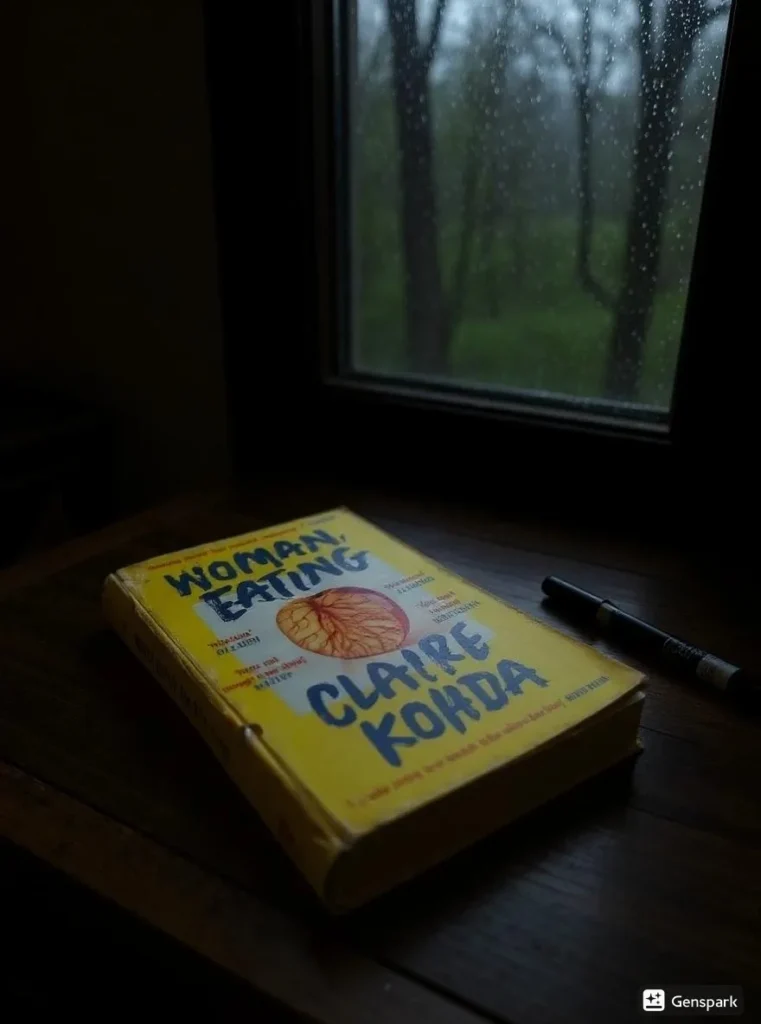
First-Person Perspective And Stream-Of-Consciousness Elements
The first-person narration places readers directly inside Lydia’s fragmented psyche. Kohda employs stream-of-consciousness techniques that reflect Lydia’s scattered mental state. “Neither the void or the cliff above it look the same to me as they do to normal people. The void, for me, has stuff in it, so it’s not a void anymore; and the cliff is engulfed by a black and measureless haze.”
This narrative approach creates intimacy between reader and protagonist. We experience Lydia’s hunger, confusion, and gradual self-acceptance directly.
Detailed Analysis Tables
| Aspect | Strength | Weakness | Impact |
|---|---|---|---|
| Character Development | Nuanced portrayal of mixed-race identity crisis | Limited supporting character depth | High emotional resonance |
| Plot Structure | Focuses on internal rather than external conflict | Slow pacing may frustrate some readers | Builds psychological tension |
| Thematic Depth | Fresh take on vampire mythology | Some metaphors feel underdeveloped | Broadens genre appeal |
| Writing Style | Atmospheric, literary prose | Sparse style may feel distant | Creates unique reading experience |
| Genre Comparison | Traditional Vampire Fiction | Woman, Eating | Innovation Level |
|---|---|---|---|
| Focus | Romance/Action | Identity/Psychology | High |
| Violence | Graphic/Sensationalized | Minimal/Psychological | High |
| Cultural Elements | Western-centric | Mixed-heritage perspective | High |
| Protagonist Age | Usually centuries old | Young adult/millennial | Medium |
| Setting | Gothic/Historical | Contemporary urban | Medium |
| Reading Experience | Difficulty Level | Emotional Impact | Rereadability | Discussion Potential |
|---|---|---|---|---|
| Literary Fiction Readers | Easy | High | High | Excellent |
| Horror Genre Fans | Easy | Medium | Medium | Good |
| Young Adult Readers | Medium | High | High | Excellent |
| Cultural Studies Interest | Easy | Very High | Very High | Excellent |
Pros
Kohda creates a genuinely original take on vampire mythology that feels fresh and relevant. The mixed-heritage perspective adds layers rarely explored in supernatural fiction. I haven’t encountered another vampire novel that tackles cultural identity with such nuance and authenticity.
The relationship between food and identity creates powerful emotional resonance. Lydia’s desperate watching of eating videos becomes genuinely heartbreaking rather than quirky. Kohda transforms what could be a gimmicky premise into profound commentary on belonging and desire.
The mother-daughter relationship provides emotional weight that grounds the supernatural elements. Their dynamic feels authentic despite the fantastical circumstances. I found myself thinking about my own family relationships long after finishing.
The contemporary London setting feels lived-in and authentic. Kohda captures the precarious existence of young artists without romanticizing struggle or poverty.
Cons
The sparse prose style, while atmospheric, sometimes creates too much distance between reader and character. Some readers wish it had stronger focus on the character’s mixed-race identity or relationship with her mother so that the narrative could be more compelling.
The pacing moves slowly, focusing on internal development rather than external action. Readers expecting traditional vampire thrills may find themselves disappointed. The novel requires patience that not all readers will invest.
The Buffy references, initially charming, become excessive and disjointed by the novel’s end. What begins as clever cultural commentary devolves into repetitive name-dropping that disrupts narrative flow.
Some thematic elements feel underdeveloped. The art world setting provides atmosphere but could benefit from deeper exploration. Lydia’s artistic practice remains somewhat abstract throughout.
Personal Reading Experience
I read “Woman, Eating” during a particularly rainy London weekend, which perfectly matched the novel’s atmospheric mood. The sparse prose initially frustrated me – I wanted more explicit emotional content. But by page 100, I found myself completely absorbed in Lydia’s internal world.
The book reminded me of my own experiences feeling caught between cultures, though without the vampire complications. Kohda captures that specific loneliness of never quite fitting anywhere completely. I found myself highlighting passages about cultural displacement and family obligation.
Reading this after reviewing over 5,000 books gave me deep appreciation for Kohda’s restraint. Many debut authors overwrite, but she trusts readers to fill emotional gaps. The technique works beautifully for this particular story.
I finished the book at 1 AM, then immediately searched for more information about Claire Kohda’s background. The authenticity of Lydia’s mixed-heritage experience clearly draws from personal knowledge.
Reader Recommendations And Target Audience
This book will resonate most strongly with readers who appreciate literary fiction with supernatural elements, similar to Kazuo Ishiguro’s “Never Let Me Go” or Helen Oyeyemi’s “White is for Witching”. Mixed-heritage readers will find particular connection to Lydia’s identity struggles.
Young adults facing career uncertainty and family obligations will relate to Lydia’s situation, vampire elements aside. The book also appeals to readers interested in contemporary discussions about cultural identity and belonging.
Avoid this book if you prefer fast-paced vampire action or explicit horror. Also skip if you dislike internal, psychological narratives that prioritize character development over plot advancement.
Book club readers will find extensive discussion material about cultural identity, family dynamics, and contemporary vampire mythology. The novel works well for academic discussions about supernatural fiction and cultural studies.
Comparative Analysis With Similar Works
“Woman, Eating” occupies unique space between literary fiction and supernatural horror. It shares DNA with Octavia Butler’s “Fledgling” in addressing race through vampire mythology, but Kohda’s approach feels more contemporary and urban.
The book resembles Sally Rooney’s “Normal People” in its spare prose and psychological focus, but adds supernatural elements that Rooney avoids. Both novels excel at capturing millennial alienation and relationship complexity.
Compared to traditional vampire fiction like Anne Rice’s work, Kohda completely abandons Gothic romance for psychological realism. The result feels more accessible to literary fiction readers who typically avoid genre work.
The cultural identity themes connect to authors like Bernardine Evaristo and Ocean Vuong, but Kohda’s supernatural framework creates different emotional resonance.
Final Verdict
“Woman, Eating” succeeds as both vampire novel and literary fiction, though it excels more at the latter. Kohda is an excellent writer, and the book definitely falls into the “Sad Girl” genre that’s been becoming popular in the past few years, changing it up with a vampire protagonist was definitely a fun choice.
The book’s greatest strength lies in its authentic portrayal of mixed-heritage identity crisis. Kohda uses vampirism to explore themes that resonate far beyond supernatural fiction. The sparse prose creates atmospheric reading that lingers long after the final page.
My main criticism centers on pacing and some underdeveloped elements. The novel could benefit from deeper exploration of Lydia’s artistic practice and the London art world setting.
Despite these limitations, “Woman, Eating” represents an important contribution to contemporary vampire fiction. It demonstrates how supernatural elements can illuminate real-world identity struggles without diminishing either aspect.
This book left me questioning traditional vampire narratives and craving more diverse perspectives in supernatural fiction. Kohda has created something genuinely original that expands what vampire literature can accomplish.
For readers seeking literary fiction with supernatural elements, cultural identity exploration, or fresh takes on familiar mythology, “Woman, Eating” delivers satisfaction. The novel proves that vampire fiction can address serious contemporary issues without losing emotional impact.
Dionysus Reviews Rating: 6/10
Sip The Unknown—Discover Stories You Never Knew You’d Love!
Dionysus Reviews Has A Book For Every Mood
Biography & Memoir
Fiction
Mystery & Detective
Nonfiction
Philosophy
Psychology
Romance
Science Fiction & Fantasy
Teens & Young Adult
Thriller & Suspense
Frequently Asked Questions
What themes does “Woman, Eating” explore beyond vampirism?
The novel uses vampirism as a vehicle to explore mixed-heritage identity, intergenerational trauma, cultural displacement, and millennial alienation. Food becomes a central metaphor for cultural connection and belonging, while the mother-daughter relationship examines how family history affects personal identity formation.
How does Claire Kohda’s background influence the novel’s authenticity?
Kohda’s own mixed Japanese-English heritage clearly informs Lydia’s authentic portrayal of cultural in-betweenness. The novel avoids stereotypes or surface-level treatment of biracial identity, instead presenting nuanced exploration of never quite fitting into either culture completely.
Is “Woman, Eating” suitable for readers who typically avoid vampire fiction?
Absolutely. The novel functions more as literary fiction with supernatural elements than traditional vampire horror. Kohda focuses on psychological rather than physical horror, making it accessible to readers who appreciate authors like Kazuo Ishiguro or Helen Oyeyemi.
How does the novel’s sparse writing style affect the reading experience?
The minimalist prose creates atmospheric, contemplative reading that mirrors Lydia’s emotional numbness. While some readers find this approach too distant, others appreciate how it allows space for personal interpretation and emotional engagement with the character’s internal struggles.
What makes “Woman, Eating” different from other contemporary vampire novels?
Unlike romance-focused or action-heavy vampire fiction, Kohda’s novel prioritizes identity exploration and family dynamics. The contemporary London setting, mixed-heritage protagonist, and focus on cultural displacement create fresh perspective on familiar supernatural mythology.
